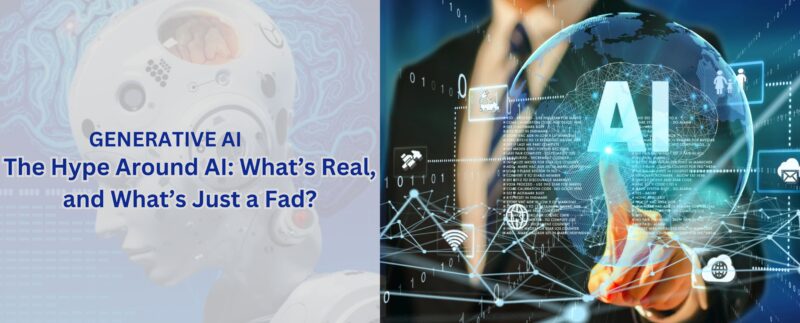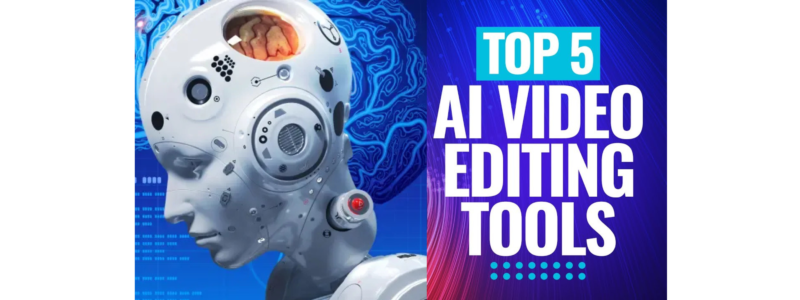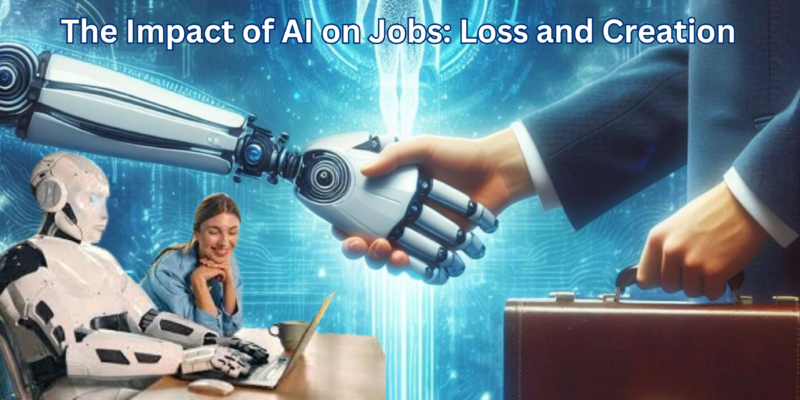Are AI Tools Empowering a Creative Workforce Replacement?
Introduction
The rapid advancement of artificial intelligence (AI) has sparked a global debate: are AI tools ushering in a new era of creative empowerment, or are they poised to disrupt traditional jobs and industries? As AI technologies like generative models, automated design platforms, and intelligent content creators become increasingly sophisticated, they challenge long-held assumptions about human-exclusive domains such as art, music, writing, and innovation. On one hand, these tools democratize creativity, enabling individuals and organizations to produce high-quality work with unprecedented speed and efficiency. Artists experiment with AI-generated visuals, writers leverage language models for ideation, and marketers automate personalized campaigns—all hinting at a future where human-AI collaboration redefines creative boundaries.

Yet, this transformation raises pressing concerns about economic displacement. Industries reliant on routine creative tasks, from graphic design to content creation, face questions about the relevance of human roles in an AI-driven workflow. Critics argue that automation risks devaluing skilled labor, exacerbating job insecurity, and widening socioeconomic divides. Meanwhile, proponents counter that AI will augment—not replace—human ingenuity, shifting focus toward higher-order problem-solving and strategic innovation.
This duality underscores a critical crossroads: How do we harness AI’s potential to amplify creativity while addressing its ethical, economic, and societal implications? The answer lies in fostering adaptive education systems, reimagining workforce policies, and cultivating ethical frameworks that prioritize equitable progress. As society navigates this paradigm shift, the conversation must balance optimism with pragmatism, ensuring that AI serves as a catalyst for inclusive growth rather than a force of disruption.
AI Tools Revolution: How New Innovations Are Flooding the Market?
The AI landscape is undergoing a seismic shift, with groundbreaking tools entering the market at an astonishing rate. These innovations are transforming industries, enhancing productivity, and redefining what technology can achieve. From automating workflows to enabling hyper-personalized experiences, AI tools are no longer a luxury—they’re a necessity. Here’s a look at how this revolution is unfolding:

Key Drivers Fueling the AI Revolution
- Advancements in Machine Learning: Improved algorithms, neural networks, and frameworks (e.g., GPT-4, Stable Diffusion) enable faster development of powerful AI solutions.
- Data Explosion: The rise of big data from social media, IoT devices, and digital platforms provides the raw material for training smarter AI models.
- Cloud Computing: Scalable, cost-effective cloud infrastructure (AWS, Azure) democratizes access to AI development for startups and enterprises alike.
- Consumer Demand: Businesses and individuals seek AI-driven efficiency, creativity, and decision-making support, pushing developers to innovate.
- Open-Source Collaboration: Platforms like Hugging Face and GitHub foster community-driven AI development, accelerating progress.
Breakthrough Innovations Reshaping Industries
AI tools are making waves across sectors with tailored solutions:
- Productivity & Business: ChatGPT : It generates content, drafts emails, and answers queries in seconds. Jasper: Creates marketing copy, blogs, and ad scripts using natural language processing. Zapier: Automates workflows by connecting apps without coding.
- Healthcare: DeepMind’s AlphaFold: Predicts protein structures to accelerate drug discovery. Butterfly Network: Uses AI-powered portable ultrasound devices for real-time diagnostics.
- Creative Arts: DALL-E 3: Turns text prompts into stunning visuals for designers and marketers . Amper Music: Composes royalty-free music using AI for video creators.
- Customer Experience: Ada: AI chatbots deliver personalized 24/7 customer support. Gong: Analyzes sales calls to provide actionable insights for teams.
- Software Development: Replit Ghostwriter: Assists coders with real-time suggestions and debugging. Tabnine: Uses AI to predict and autocomplete code lines.
The Democratization of AI Development
- No-Code Platforms: Tools like Bubble and Airtable let non-technical users build AI-driven apps.
- Affordable APIs: Services like Google’s Vision AI and Twilio’s NLP allow seamless integration of AI into existing systems.
- Freemium Models: Startups offer free tiers (e.g., Canva’s Magic Design) to attract users before upselling advanced features.
Challenges in the AI Gold Rush
- Ethical Concerns: Bias in algorithms, privacy violations, and deepfake misuse require stricter governance.
- Overcrowded Market: Users face decision fatigue as thousands of tools compete for attention.
- Skill Shortages: Demand for AI-savvy professionals outpaces supply, slowing adoption.
- Regulatory Hurdles: Governments struggle to balance innovation with safeguards (e.g., EU’s AI Act).
What’s Next for AI Tools?
- Hyper-Specialization: Tools targeting niche sectors (e.g., AI for agriculture, construction).
- Edge AI: Faster, decentralized processing on devices (smartphones, IoT sensors).
- Quantum AI: Combining quantum computing with machine learning for unprecedented speed.
- Ethical AI: Tools focused on transparency, fairness, and accountability.
The AI tools revolution is a dynamic wave of innovation, offering unprecedented opportunities while posing unique challenges. Staying informed and adapting to these advancements is key to thriving in this new era.
Best AI Tools for Content Writing, Video Editing, Designing & Coding
The rise of AI has introduced a wave of tools that streamline tasks across industries, empowering professionals and hobbyists alike. Below are some of the most impactful AI tools revolutionizing content creation, video production, design, and software development:

Content Writing
- ChatGPT (OpenAI): Generates blog drafts, social media posts, and creative ideas using natural language prompts.
- Jasper: Tailors marketing copy, email campaigns, and SEO-friendly content for businesses.
- Grammarly: Enhances grammar, tone, and clarity in real time for error-free writing.
- Copy.ai: Crafts product descriptions, ad scripts, and brainstorming prompts in seconds.
Video Editing
- Descript: Edits videos by editing text transcripts, adds AI-generated voiceovers, and removes filler words.
- Runway ML: Offers AI-powered tools for object removal, background replacement, and style transfer.
- Pictory: Converts long-form content into short videos with automated scene creation and captions.
- Synthesia: Creates AI-generated avatars and videos from text scripts for training or marketing.
Designing
- Canva Magic Design: Generates customizable templates for social media, presentations, and posters using text prompts.
- Adobe Firefly: Produces logos, illustrations, and photo edits through generative AI tools.
- MidJourney: Transforms text descriptions into high-quality artwork and graphics for creative projects.
- Figma AI Plugins: Streamlines UI/UX design with auto-layout suggestions and asset generation.
Coding
- GitHub Copilot: Suggests code snippets, debugs errors, and autocompletes lines in multiple programming languages.
- Replit Ghostwriter: Provides real-time code assistance and explanations for developers of all skill levels.
- Amazon CodeWhisperer: Generates secure, optimized code for cloud-based applications.
- Tabnine: Predicts and autocompletes code using AI trained on open-source repositories.
These tools exemplify how AI is democratizing creativity and technical expertise. Whether you’re drafting a blog, editing a video, designing a brand identity, or building software, AI-driven solutions save time, reduce costs, and unlock new possibilities. As technology evolves, staying updated on these tools will ensure you remain competitive in an increasingly AI-driven world.
AI is doing both—displacing jobs and creating new ones
It’s a messy, uneven process, and the balance depends on where you look. On the job loss side, automation is hitting repetitive, predictable tasks hard. Think data entry, basic customer service, or assembly line work. A 2023 McKinsey report estimated that AI could automate up to 30% of hours worked globally by 2030, affecting millions of roles. Goldman Sachs pegged it at around 300 million full-time jobs potentially impacted, with white-collar sectors like admin and legal support seeing big exposure. Real-world examples back this up: companies like IBM have cut payroll staff by leaning on AI tools, and chatbots are already replacing some call center gigs.

But it’s not just a destruction story. AI’s also spawning new roles. Demand for AI specialists—data scientists, machine learning engineers, prompt engineers—has spiked. The World Economic Forum’s 2023 Future of Jobs report said tech-related fields are growing fast, with 97 million new roles projected by 2025, many tied to AI. Beyond tech, there’s spillover: healthcare’s seeing AI-driven diagnostics create demand for technicians to manage those systems, and creative industries are hiring for AI-assisted content production. Even trucking, often cited as an automation victim, is shifting toward roles like fleet management or remote vehicle oversight.
The catch? Transitioning isn’t smooth. Displaced workers—say, a 50-year-old factory hand—don’t just pivot to coding overnight. Upskilling takes time, money, and access, which not everyone has. Data from the U.S. Bureau of Labor Statistics shows tech job growth, but unemployment ticks up too when automation outpaces retraining. Meanwhile, new jobs often cluster in urban hubs, leaving rural areas screwed.
Overall Impact:
- AI simultaneously eliminates and generates jobs; the immediate burden falls heavily on less-skilled workers.
- Over time, it could spark a wave of innovation, but that relies on robust education and support systems.
- Past tech revolutions, like industrialization, hint at eventual benefits—though the transition is often harsh for those affected.
AI to Our Advantage – How to improve skills and work efficiently alongside AI?
Integrating artificial intelligence (AI) into your professional life can significantly enhance productivity and open new avenues for career growth. To effectively harness AI, consider the following strategies:
- Grasp AI’s Strengths: Get familiar with what AI excels at, like crunching numbers, spotting patterns, or handling routine chores, so you can use it to support your own talents.
- Sharpen Your Judgment: Rely on AI for quick ideas or analysis, but hone your skills in reviewing and improving its work to ensure it fits your goals.
- Learn Faster with AI Tools: Tap into AI-driven resources—think coding helpers, language apps, or online courses—to boost your expertise in areas like tech, communication, or art.
- Cut Out the Busywork: Let AI take over repetitive jobs such as organizing files, drafting emails, or gathering basic info, giving you more time for big-picture thinking.
- Team Up Smartly: Work alongside AI by giving it clear directions and tweaking its outputs, creating results that reflect your vision with less effort.
By blending AI’s efficiency with your human creativity and insight, you can unlock new levels of skill and productivity, turning it into a powerful ally for personal and professional growth.
Conclusion
AI tools are undoubtedly transforming the creative workforce by enhancing productivity, streamlining processes, and enabling innovative ideas. While these advancements present opportunities for growth and collaboration between humans and technology, concerns about job displacement and the loss of human touch remain valid. The key lies in finding a balance where AI supports creativity rather than replacing it entirely. By adapting to this evolving landscape, fostering skills that complement AI, and promoting ethical use, we can ensure that the future of work benefits both creators and society as a whole.

